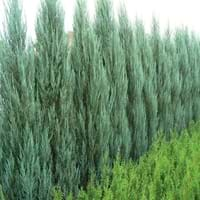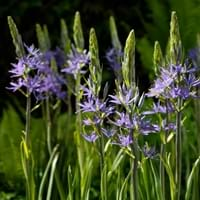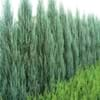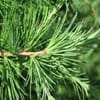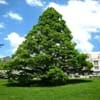Life Span
Perennial
Perennial
Type
Needled or Scaled Evergreen
Bulb or Corm or Tuber
Origin
Hybrid origin, North America
Western United States, Northwestern United States, California, Canada
Types
Not Available
Quamash
Habitat
Cold Regions, Dry areas, Dry Forest
Not Available
USDA Hardiness Zone
3-7
3-8
Sunset Zone
1a, 1b, 2a, 2b, 3a, 3b, 5, 6, 7, 8, 9, 10, 11, 12, 13, 14, 15, 16, 17, 18, 19, 20, 21, 22, 23, 24
21,22
Habit
Pyramidal
Upright/Erect
Minimum Height
Not Available
Minimum Width
Not Available
Flower Color
Non Flowering Plant
Blue, Dark Blue
Flower Color Modifier
Bicolor
Bicolor
Leaf Color in Spring
Green
Green, Ivory
Leaf Color in Summer
Green
Light Green
Leaf Color in Fall
Green
Several shades of Green
Leaf Color in Winter
Green
Light Green
Leaf Shape
Acicular
Long linear and narrow
Plant Season
Spring, Summer, Fall
Spring, Summer
Sunlight
Full Sun
Full Sun, Partial Sun
Growth Rate
Medium
Medium
Type of Soil
Clay, Loam, Sand
Loam
The pH of Soil
Acidic, Neutral, Alkaline
Acidic, Neutral, Alkaline
Soil Drainage
Well drained
Well drained
Bloom Time
Spring
Late Spring, Early Summer
Tolerances
Drought
Drought
Where to Plant?
Ground
Container, Ground
How to Plant?
stem tip cuttings, Tip cutting
From bulbs, Seedlings
Plant Maintenance
Medium
Medium
Watering Requirements
Average Water Needs, Do not water frequently
Do not water frequently, Does not require lot of watering, Requires regular watering, Requires watering in the growing season
In Summer
Lots of watering
Lots of watering
In Spring
Moderate
Moderate
In Winter
Average Water
Average Water
Soil pH
Acidic, Neutral, Alkaline
Acidic, Neutral, Alkaline
Soil Type
Clay, Loam, Sand
Loam
Soil Drainage Capacity
Well drained
Well drained
Sun Exposure
Full Sun
Full Sun, Partial Sun
Pruning
Remove damaged leaves, Remove dead branches, Remove dead leaves
Remove dead leaves, Remove dead or diseased plant parts
Fertilizers
All-Purpose Liquid Fertilizer
All-Purpose Liquid Fertilizer
Pests and Diseases
Red blotch
Red blotch
Plant Tolerance
Drought
Drought
Flowers
Insignificant
Showy
Flower Petal Number
Single
Single
Fragrant Bark/Stem
Yes
No
Foliage Texture
Medium
Medium
Foliage Sheen
Not Available
Matte
Attracts
Aphids, Early/Late Blight
Flying insects
Allergy
Not Available
Asthma
Aesthetic Uses
Not Used For Aesthetic Purpose
Beautification, Landscape Designing, Showy Purposes
Beauty Benefits
Not Available
Not Available
Environmental Uses
Air purification
Air purification
Medicinal Uses
Cold, Cough, Laxative
Not Available
Part of Plant Used
Shoots, Stem
Bulbs, Flowers, Leaves
Other Uses
Not Available
Decoration Purposes, Showy Purposes, Used As Food, Used as Ornamental plant
Used As Indoor Plant
No
No
Used As Outdoor Plant
Yes
Yes
Garden Design
Foundation, Hedges, Mixed Border, Rock Garden, Wall, Screening, Wind Break
Foundation, Mixed Border, Rock Garden / Wall, Wildflower
Botanical Name
JUNIPERUS scopulorum 'Cologreen'
CAMASSIA quamash 'Blue Melody'
Common Name
Rocky Mountain juniper
Blue Melody Camas, Camas
In Hindi
Juniperus scopulorum
केमाज़
In German
Juniperus scopulorum
Camas
In French
Juniperus scopulorum
Camas
In Spanish
Juniperus scopulorum
Camas
In Greek
Juniperus scopulorum
Camas
In Portuguese
Juniperus scopulorum
Camas
In Polish
Juniperus scopulorum
Camas
In Latin
Juniperus scopulorum
camas
Phylum
Tracheophyta
Spermatophyta
Order
Pinales
Asparagales
Family
Cupressaceae
Liliaceae
Clade
Not Available
Angiosperms, Monocots
Tribe
Not Available
Not Available
Subfamily
Not Available
Not Available
Importance of Juniperus scopulorum and Camas
Want to have the most appropriate plant for your garden? You might want to know the importance of Juniperus scopulorum and Camas. Basically, these two plants vary in many aspects. Compare Juniperus scopulorum and Camas as they differ in many characteristics such as their life, care, benefits, facts, etc. Every gardener must at least have the slightest clue about the plants he wants to plant in his garden. Compare their benefits, which differ in many ways like facts and uses. The medicinal use of Juniperus scopulorum is Cold, Cough and Laxative whereas of Camas is Not Available. Juniperus scopulorum has beauty benefits as follows: Not Available while Camas has beauty benefits as follows: Not Available.
Compare Facts of Juniperus scopulorum vs Camas
How to choose the best garden plant for your garden depending upon its facts? Here garden plant comparison will help you to solve this query. Compare the facts of Juniperus scopulorum vs Camas and know which one to choose. As garden plants have benefits and other uses, allergy is also a major drawback of plants for some people. Allergic reactions of Juniperus scopulorum are Not Available whereas of Camas have Asthma respectively. Having a fruit bearing plant in your garden can be a plus point of your garden. Juniperus scopulorum has no showy fruits and Camas has no showy fruits. Also Juniperus scopulorum is not flowering and Camas is not flowering . You can compare Juniperus scopulorum and Camas facts and facts of other plants too.
